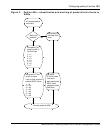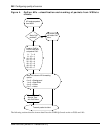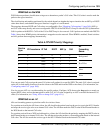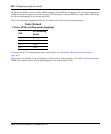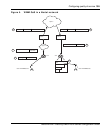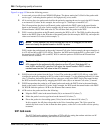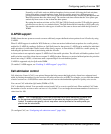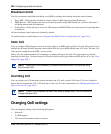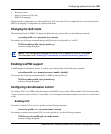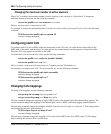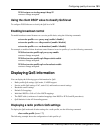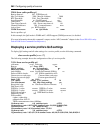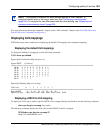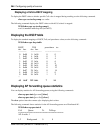
Configuring quality of service 359
Nortel WLAN—Security Switch 2300 Series Configuration Guide
• Broadcast control
• Static CoS state and CoS value
• DSCP-CoS mappings
The QoS mode is configurable on a radio-profile basis. CAC and static CoS are configurable on a service-profile basis.
DSCP-CoS mapping is configurable on a global switch basis.
Changing the QoS mode
The default QoS mode is WMM. To change the QoS mode on a radio profile, use the following command:
set radio-profile name qos-mode {svp | wmm}
For example, the following command changes the QoS mode for radio profile rp1 to SVP:
WSS# set radio-profile rp1 qos-mode svp
success: change accepted.
Enabling U-APSD support
U-APSD support is disabled by default. To enable it on a radio profile, use the following command:
set radio-profile name wmm-powersave {enable | disable}
For example, the following command enables U-APSD on radio profile rp1:
WSS# set radio-profile rp1 qos-mode svp
success: change accepted.
Configuring call admission control
To configure CAC for an SSID, enable the feature on the SSID’s service profile. When enabled, CAC limits the number
of active sessions a radio can have to 14 by default. You can change the maximum number of sessions to a value from 0
to 100.
Enabling CAC
To enable or disable CAC on a service profile, use the following command:
set service-profile name cac-mode {none | session}
For example, to enable session-based CAC on service profile sp1, use the following command:
WSS# set service-profile sp1 cac-mode session
success: change accepted.
Note. SVP configuration requires ACLs to set CoS, in addition to the SVP QoS mode.
(For information, see “Enabling SVP optimization for SpectraLink phones” (page 437).)



